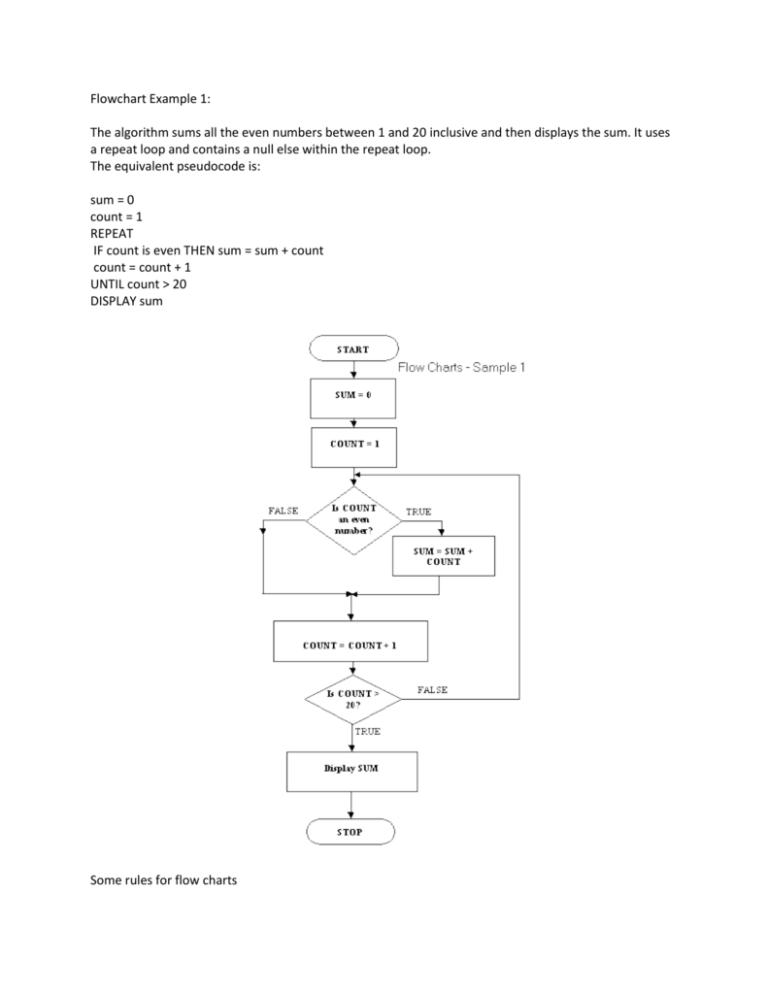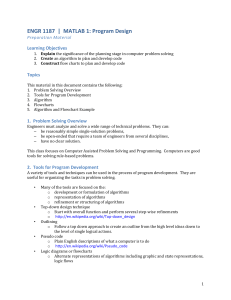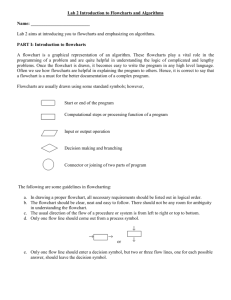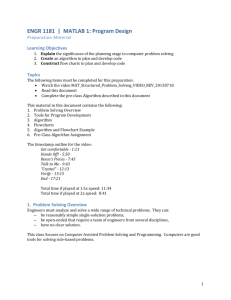Flowchart Examples: Algorithms and Logic
advertisement

Flowchart Example 1: The algorithm sums all the even numbers between 1 and 20 inclusive and then displays the sum. It uses a repeat loop and contains a null else within the repeat loop. The equivalent pseudocode is: sum = 0 count = 1 REPEAT IF count is even THEN sum = sum + count count = count + 1 UNTIL count > 20 DISPLAY sum Some rules for flow charts Well-drawn flow charts are easy to read. What must you do to draw well-drawn flow charts? Here are a few rules: a. Every flow chart has a START symbol and a STOP symbol b. The flow of sequence is generally from the top of the page to the bottom of the page. This can vary with loops which need to flow back to an entry point. c. Use arrow-heads on connectors where flow direction may not be obvious. d. There is only one flow chart per page e. A page should have a page number and a title f. A flow chart on one page should not break and jump to another page g. A flow chart should have no more than around 15 symbols (not including START and STOP) Flow Chart Example 2: Draw a flowchart to find the sum of first 50 natural numbers. Answer: The required flowchart is given in Fig. 1. Fig. 2 Sum of first 50 natural numbers Flow Chart Example 2 Draw a flowchart to find the largest of three numbers A, B, and C. Fig 3 Flowchart for finding out the largest of three number Flowchart Example 4 Draw a flowchart for computing factorial N (N!) Where N! = 1?2?3?....N . The required flowchart has been shown in fig 3 Answer: Fig 4 Flowchart for computing factorial N Flowchart Example 5: A product assembly team in a gaming machine manufacturer were looking for ways of building the product more efficiently. They broke down the assembly process into a set of Flowcharts, showing how sub-assemblies were made and then built into the final product. Analysis of the reel assembly process revealed two improvements: The kit of parts was already checked by the kit assembly line, who were sometimes careless, as they knew the kit would be rechecked. The assembly line process was improved so the check here could be removed. This saved over two minutes per reel in checking, and up to fifteen minutes when the kit was faulty. Fitting the reel band after the reel had been attached to the base was awkward. Fitting the band before the reel was attached to the base was more comfortable and saved about a minute per reel. The process Flowcharts, before and after improvement, are shown in Fig. 5. Fig 4 Flowchart for gaming machine manufacturer








